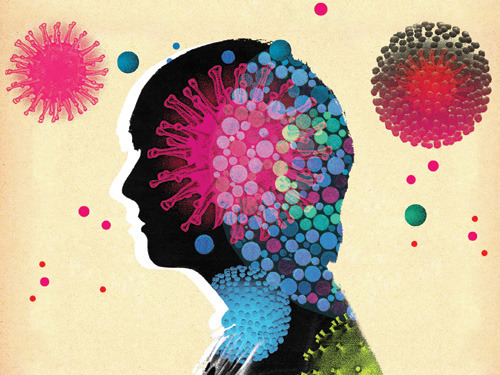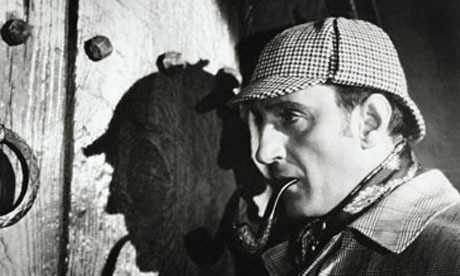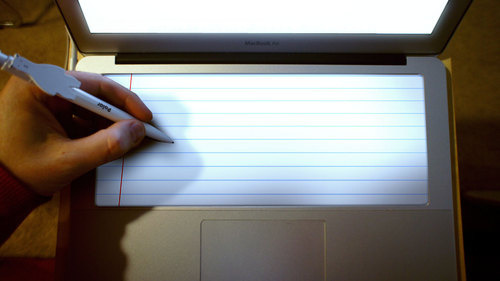Derren Brown's Blog, page 47
January 27, 2011
Infectious moods: How bugs control your mind

"The brain is supposed to be isolated from the immune system – but now it seems that happiness, depression and even mental illness really can be catching
FEELING happy? Down in the dumps? Or been behaving strangely lately? Besides the obvious reasons, whether or not you are happy or sad, or prone to depression or other mental illnesses, could be a consequence of an infection – or even down to the diseases that you didn't catch during childhood.
"It used to be thought that the immune system and the nervous system were worlds apart," says John Bienenstock of McMaster University in Hamilton, Canada. Now it seems the immune system, and infections that stimulate it, can influence our moods, memory and ability to learn. Some strange behaviours, such as obsessive compulsive disorder, may be triggered by infections, and the immune system may even shape our basic personalities, such as how anxious or impulsive we are. The good news is that understanding these links between the brain and immune system could lead to new ways of treating all kinds of disorders, from depression to Tourette's syndrome.
This is a massive shift in thinking. Not so long ago, the blood-brain barrier was thought to isolate the brain from the immune system. The cells that make up the walls of blood capillaries are joined together more tightly in the brain than elsewhere in the body, preventing proteins and cells getting into the brain. Now, though, it is becoming clear that antibodies, signalling molecules and even immune cells often get through, sometimes with radical effects. In fact, immune cells do not even need to reach the brain to influence it. Here we look at some of the effects they can have."
Read more at New Scientist (Thanks @XxLadyClaireXx)
January 26, 2011
Mammoth 'could be reborn in four years'

"Previous efforts in the 1990s to recover nuclei in cells from the skin and muscle tissue from mammoths found in the Siberian permafrost failed because they had been too badly damaged by the extreme cold. But a technique pioneered in 2008 by Dr. Teruhiko Wakayama, of the Riken Centre for Developmental Biology, was successful in cloning a mouse from the cells of another mouse that had been frozen for 16 years.
Now that hurdle has been overcome, Akira Iritani, a professor at Kyoto University, is reactivating his campaign to resurrect the species that died out 5,000 years ago.
"Now the technical problems have been overcome, all we need is a good sample of soft tissue from a frozen mammoth," he told The Daily Telegraph. He intends to use Dr Wakayama's technique to identify the nuclei of viable mammoth cells before extracting the healthy ones. The nuclei will then be inserted into the egg cells of an African elephant, which will act as the surrogate mother for the mammoth.
Professor Iritani said he estimates that another two years will be needed before the elephant can be impregnated, followed by the approximately 600-day gestation period. He has announced plans to travel to Siberia in the summer to search for mammoths in the permafrost and to recover a sample of skin or tissue that can be as small as 3cm square. If he is unsuccessful, the professor said, he will ask Russian scientists to provide a sample from one of their finds. "The success rate in the cloning of cattle was poor until recently but now stands at about 30 per cent," he said. "I think we have a reasonable chance of success and a healthy mammoth could be born in four or five years.""
Read more at The Telegraph (Thanks Tom)
A new casebook for Sherlock Holmes

"As Anthony Horowitz gets the nod for a new Holmes novel, what mysteries do you think the detective should tackle?
The Sherlock Holmes revival continues. Anthony Horowitz, the screenwriter and Alex Rider children's series author, has been chosen by the Conan Doyle estate to write a new Holmes novel, to be released this September. He said he hoped to create "a first-rate mystery for a modern audience while remaining absolutely true to the spirit of the original".
In the spirit of the announcement, imagine that you were given Horowitz's task. What would you like to see the intrepid hero get up to? What mystery would he solve? Perhaps you can even provide a plot outline – in 100 words or fewer."
Read more at The Guardian (Thanks Sara)
January 25, 2011
How is autobiographical memory divided into chapters?
"Autobiographical or 'episodic' memory describes our ability to recall past experiences and is distinct from semantic memory, which is our factual knowledge about the world. So far so good, but according to Youssef Ezzyat and Lila Davachi, psychology until now has largely neglected to investigate exactly how the brain organises the continuity of lived experience into a filing system of discrete episodes.
Ezzyat and Davachi have made a start. They had 23 participants read six narratives containing dozens of sentences about a protagonist performing everyday activities. Each sentence was displayed one at a time on a screen. Crucially, a minority of sentences began: 'A while later …', thereby conveying a temporal boundary in the narrative; the end of one episode and start of another. For comparison, a small number of control sentences began: 'A moment later …', indicating that the ensuing sentence was part of the same episode, not a new one.
After a ten minute break, the participants were given a surprise memory test. Presented with one sentence from the earlier narratives, their task was to recall the sentence that had followed. The key finding here was that the participants were poorer at recalling a sentence that came after a temporal boundary. It's as if information within an episode was somehow bound together, whereas a memory divide was placed between information spanning two episodes.
A second study was similar to the first except that nineteen participants had their brains scanned during the initial read-through of the sentences. Ezzyat and Davachi identified patterns of neural activity in distinct regions of the prefrontal cortex and the middle-temporal gyrus that either correlated with within-event processing or with forming boundaries between events. These neural activity patterns were more distinct in those participants who showed larger behavioural effects of episode boundaries in their memory performance."
Read more at BPS Research Digest (Thanks Annette M)
Print your own flute
"Cheap 3D printers can now quickly make plastic replicas of almost anything, from an insect's wings to copies of their own parts. But now Amit Zoran and his team from the MIT Media Lab have used one to recreate the intricate design of a flute (see video above).
They started by making a digital model of the instrument based on a metal flute but with adaptations to account for the new materials used, and the level of precision possible, with 3D printing. The model was then sent to a 3D printer which constructed the flute in four parts over a period of 15 hours. It squirts out three different plastic composites developed by Objet, the company that created the printer they used. Once the printing was complete, the researchers just had to put together the four parts and manually add springs.
When tested by a flautist, the plastic flute was given the thumbs up for sound. "It sounds perfect in terms of the acoustics," says Seth Hunter. But there are issues with the design of the mouthpiece and the keys which the team plans to improve. With the 3D printing technique, they can modify their model and create a new prototype relatively quickly and cheaply. The flute in the video is the seventh iteration of their design.
The goal, however, isn't to create a flute that's superior to a metal one: the challenge is to print a working flute that's acoustically and ergonomically similar. "This project is a technical exercise, an effort to see how far we can push designs for 3D printing technologies," says Zoran. In the future, the technology could be used to create novel instruments, like a trumpet with multiple pipes, that would be hard to make otherwise."
Read more at New Scientist (Thanks Annette M)
January 24, 2011
Your Lying Eyes: Can This Be Happening?
"You have two eyes.
Each eye sees a slightly different world. (Put a finger in front of your face, switch from one eye open to the other and that finger will shift, just a little bit.) But rather than walk around all day seeing in double vision, your brain pulls the world back into one-ness.
Brains decide what we see. Kokichi Sugihara knows this better than anyone. He makes videos that trick your brain into seeing things that you know, you absolutely know, can't happen.
And yet —
Obviously wooden balls cannot run up a slope. Yet they seem to. Sugihara uses no editing tricks. His props are cardboard and glue, no special effects. All he does is find the precise angle where our brain assumes an impossible act. In this case, he chooses the angle that makes down-sloping planes look like up-sloping planes.
Then he changes the angle and you see how he did it. (Or more correctly, how you did it.)
Brains, you may not realize, make arbitrary assumptions to keep our world intact. Sugihara knows exactly where those assumptions pop into place. Using simple paper and glue constructions, he creates shapes cannily designed to make us see something that isn't happening."
Read more at NPR (Thanks Christopher C)
Why You Learn More Effectively by Writing Than Typing

"The act of writing helps you clarify your thoughts, remember things better, and reach your goals more surely. Here's a look at the science and psychology behind writing, and why the pen may be mightier than the keyboard.
Many productivity experts and writers have long espoused the power of writing things down (in fact, paper is our many of our favorite to-do list manager and we're a little fanatical about our favorite pens).
Patrick E. McLean's defense of writing longhand is a poetic dissertation on the subject; words can rush out in their raw, feral state when the pen is your tool. Technology, meanwhile, can be too distracting and distancing.
Maybe you're on the other side of the fence, though, and think all this just a lot of pure romanticism: People may feel more comfortable and productive with pen and paper because that's what they've used most of their lives (and what we as a species have used for centuries), but some like typing more and can do it more quickly. Certainly, more of us are becoming fast typists by necessity and the art of handwriting is deteriorating.
A couple of studies, though, substantiate why the physical act of writing really does boost learning and goal achievement. Hoping to provide actual scientific proof on the efficacy of writing down and sharing goals (to make up for an often-quoted mythical Harvard/Yale study of goals), a psych professor at Dominican University of California found that people who wrote down their goals, shared them with others, and maintained accountability for their goals were 33% more likely to achieve them, versus those who just formulated goals. (One can argue that in this instance, typing would be equally effective; see "Why Writing Works Better Than Typing" below for why writing still may be better.) Another study found positive effects of writing on learning foreign words, and a survey of note-taking studies found several examples where taking notes helped students with recall and academic performance."
Read more at Lifehacker (Thanks Annette M)
January 23, 2011
Trust Your Gut—If You're Aware of Your Heartbeat
"All the songs that tell people to listen to their hearts may be truer than crooners realize, a new study says. Test subjects who were more conscious of their heart rates were more likely to "trust their guts" when making decisions—and in some cases that intuition paid off.
University of Cambridge researcher Barnaby Dunn and colleagues had 28 subjects play a virtual card game in which they could win money by choosing cards from four supposedly random decks. The game involved guessing whether a chosen card would be the same color as an already upturned card. In actuality the decks were stacked, and it was only possible to win big by choosing from two of the four decks.
No matter what the participants guessed, they would be correct 60 percent of the time if they chose from deck A or B. They'd be right only 40 percent of the time if they chose from deck C or D. "In the card game, there were good choices to make and bad choices, and when they make bad choices, their body should give them an arousal signal," such as an increased heart rate, Dunn said.
Previous work done by University of Iowa researchers had shown that subjects playing a similarly stacked card game began avoiding the "bad" decks long before they were aware of it, about the same time that their palms began to sweat. In the new experiment, the researchers first asked people to count their own heartbeats. "We don't want them to feel their pulse [with their fingers], and we ask them to take their watches off" for the heartbeat-counting exercise, Dunn said.
"Most people say, I've got no idea [what my heart rate is], and yet despite that, quite a lot of people can do it." Playing the card game then showed that people who counted their own heartbeats more accurately caught on to the stacked decks much quicker—even if they didn't know it."
Read more at National Geographic (Thanks Annette M)
January 22, 2011
Expert Chess Players Win by Tapping Into Intuitive Brain Circuits
Getting better at chess, it turns out, isn't merely a matter of thinking harder—it has more to do with what parts of the brain you use to think in the first place. Neuroscientists from Japan studied the brainy blood-flows of both professional and amateur shogi players (a chess-like game from Japan) and found that professionals are more apt to put on their intuitive thinking caps.
The study, published inScience, used magnetic resonance imaging (MRI) to examine which brain areas showed the most blood flow as professional and amateur shogi players tested their mettle during a match.
[The scientists] studied 11 professional players and 17 amateurs, and identified two brain activations that were specific to the pros. First, both groups of players were shown different shogi board patterns as well as other scenes, but only the experts showed activation in a portion of the parietal lobe known as the precuneus. The other brain difference occurred when the players were forced to quickly pick their next best move. The professionals' brain scans revealed activity in a portion of the basal ganglion known as the caudate nucleus, while the amateurs' scans did not.
Full story at Discover Blogs
Alien Hand Syndrome sees woman attacked by her own hand
"Imagine being attacked by one of your own hands, which repeatedly tries to slap and punch you. Or you go into a shop and when you try to turn right, one of your legs decides it wants to go left, leaving you walking round in circles.
Last summer I met 55-year-old Karen Byrne in New Jersey, who suffers from Alien Hand Syndrome. Her left hand, and occasionally her left leg, behaves as if it were under the control of an alien intelligence. Karen's condition is fascinating, not just because it is so strange but because it tells us something surprising about how our own brains work. It started after Karen had surgery at 27 to control her epilepsy, which had dominated her life since she was 10. Surgery to cure epilepsy usually involves identifying and then cutting out a small section of the brain, where the abnormal electrical signals originate.
When this does not work, or when the damaged area cannot be identified, patients may be offered something more radical. In Karen's case her surgeon cut her corpus callosum, a band of nervous fibres which keeps the two halves of the brain in constant contact. Cutting the corpus callosum cured Karen's epilepsy, but left her with a completely different problem. Karen told me that initially everything seemed to be fine. Then her doctors noticed some extremely odd behaviour.
"Dr O'Connor said 'Karen what are you doing? Your hand's undressing you'. Until he said that I had no idea that my left hand was opening up the buttons of my shirt. "So I start rebuttoning with the right hand and, as soon as I stopped, the left hand started unbuttoning them. So he put an emergency call through to one of the other doctors and said, 'Mike you've got to get here right away, we've got a problem'.""
Read more at BBC News and watch the video (Thanks Adrian)
Derren Brown's Blog
- Derren Brown's profile
- 797 followers



